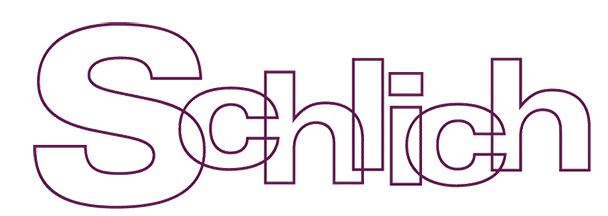The EPO has introduced new versions of the Guidelines for Examination in the European Patent Office and the Guidelines for Search and Examination at the EPO as PCT Authority. Both sets of Guidelines took effect on 1 March 2022, as part of the EPO’s regular two-yearly cycle of revisions.
The EPO has introduced new versions of the Guidelines for Examination in the European Patent Office and the Guidelines for Search and Examination at the EPO as PCT Authority. Both sets of Guidelines took effect on 1 March 2022, as part of the EPO’s regular two-yearly cycle of revisions.
The changes include editorial changes, updates to reflect decisions of the Enlarged Board of Appeal and other Boards of Appeal since the last revision, decisions of the President and procedural changes, and responses to requests for clarification from users.
Of course, the attorneys at Schlich always seek to provide up-to-date advice reflecting the latest decisions of the EPO Boards of Appeal and procedural changes. In many instances, the updated Guidelines merely reflect and confirm current practice that we have already applied to your patent cases.
Both sets of Guidelines have been amended to refer throughout to Online Filing 2.0 rather than the obsolete CMS online filing platform.
Guidelines for Examination in the European Patent Office
The major changes include:-
- Rearranging materials relating to written submissions made in preparation for or during oral proceedings and updating to include further details about the practice regarding late-filed submissions (now at E-VI, 2.2).
- Expanding the discussion of examples of inconsistencies between the description and claims that should be avoided and confirming current practice in amending the description following amendment of the claims (F-IV, 4.3). This expanded discussion appears to reflect the strict approach to description amendments that we have already experienced during examination, rather than a further change to practice.
- Expanding discussion of the assessment of inventive step for claims comprising technical and non-technical features (the COMVIK approach) in light of decision G1/19 of the Enlarged Board of Appeal relating to computer implemented simulations, and providing of examples (G-VII, 5.4). See also our comments below regarding the changes at G-II, 3.3.
Other noteworthy changes include:-
- Updating the practice for designating inventors – only the country and place of residence is now required and inventor notifications are no longer sent by the EPO (A-III, 5.3, previous A-III, 5.4 deleted).
- Clarifying the requirement for claiming priority if the earlier application was filed by joint applicants in light of decision T844/18 – all such applicants must be among the applicants of the later application or have transferred their rights in the earlier application to the applicants of the later European patent application (A-III, 6.1).
- Clarifying that claims deemed abandoned through non-payment of the claims fee may nevertheless be pursued in a divisional application (A-III, 9).
- Updating the requirements for nucleotide and amino acid sequence listings in view of the introduction of WIPO Standard ST.26 on 1 July 2022 (A-IV, 5).
- Recommending use of EPO Form 1018 for withdrawing an application prior to publication (A-VI, 1.2)
- Clarifying that the deadline for filing pre-hearing written submissions under Rule 116 EPC cannot be extended (D-VI, 3.2).
- Expanding the discussion of assessment of partial priorities and providing examples (F-V!, 1.5).
- Revising discussion of whether there is an invention under Article 52(1) EPC and distinguishing this from assessment of novelty, inventive step and susceptibility of industrial application (G-II, 2).
- Expanding and providing examples of when mathematical methods contribute to the technical character of an invention, including in applications of computer implemented simulation and modelling (G-II, 3.3).
- Expanding and providing examples regarding the application of exclusions to data retrieval, formats and structures (G-II, 3.6.3).
- Providing further discussion of the exclusion to genetically modifying animals and the need to balance animal suffering and environmental risk against human benefit (G-II, 5.3).
- Clarifying the patentability requirements for antibodies (G-II, 5.6).
- Clarifying that objections in respect of double patenting may arise under Article 125 EPC, following decision G4/19 of the Enlarged Board of Appeal (G-IV, 5.4).
- Indicating that introduction of a feature taken from the description to limit the claims during examination does not give rise to an objection that the claims relate to unsearched subject matter, unless the introduced subject matter was explicitly declared as not searched (H-II, 6.1).
Guidelines for Search and Examination at the EPO as PCT Authority
The major changes include:-
- Expanding Part A (Guidelines for Formalities Examination) to include a new chapter VII on languages, which confirms that the international application must be filed at the EPO Receiving Office in English, French or German, outlines opportunities for addressing linguistic deficiencies, and limited circumstances in which an EPO official language other than the language of proceedings may be used for correspondence with the EPO.
- Expanding Part A to include a new section 1.6 in chapter VI on the applicant’s entitlement to claim priority. This includes a recommendation to ensure that at the international filing date all applicants who filed the earlier application are either mentioned as applicants in the international application or have validly transferred their rights to the applicant, or one of the applicants, in the international application. The new section also notes that all applicants of the earlier application must be named as applicants, or transfer their rights to applicants of the international application – it is not sufficient if only one of the applicants for the earlier application is named as applicant for the international application. Both observations are in line with our long-standing advice to our clients.
If you would like to discuss any of the aspects of European patent practice highlighted by the current revisions to the Guidelines, please contact your usual Schlich attorney.









